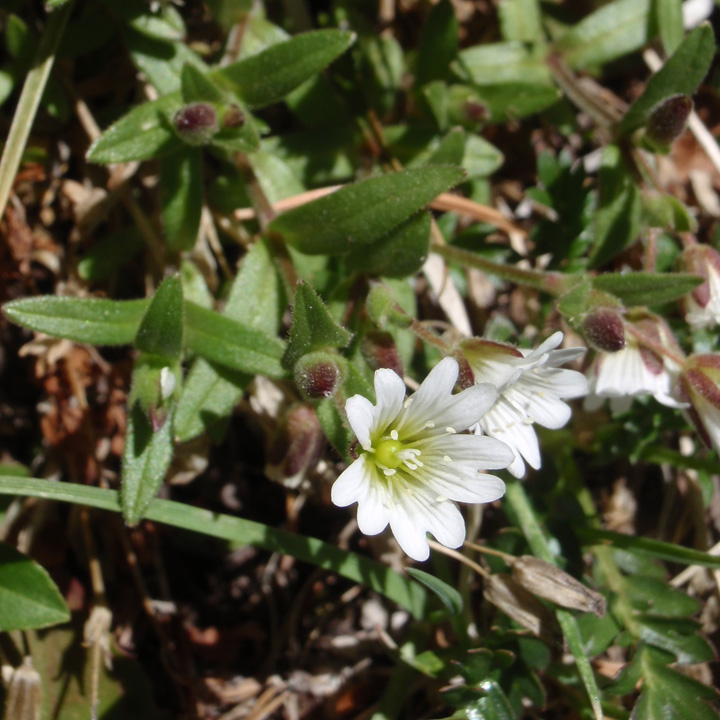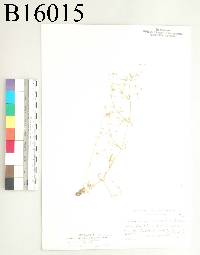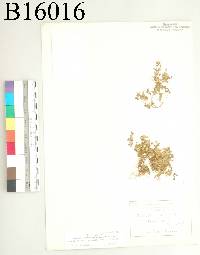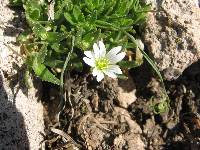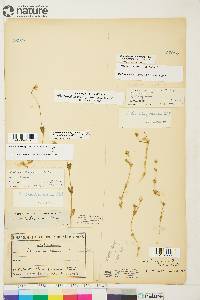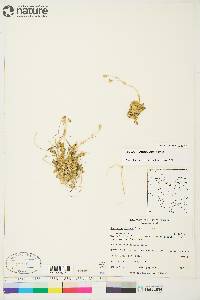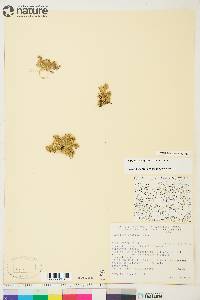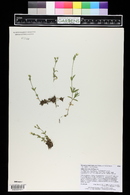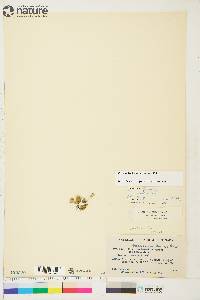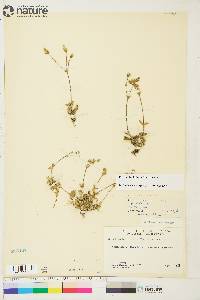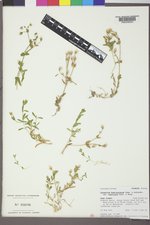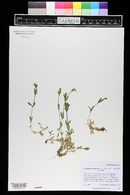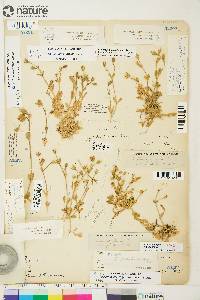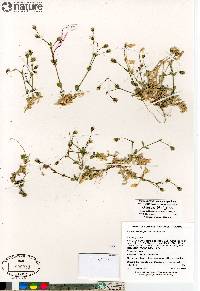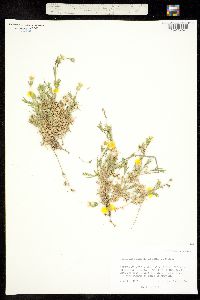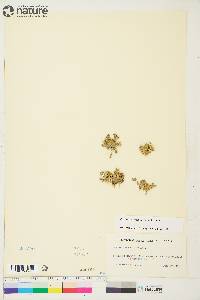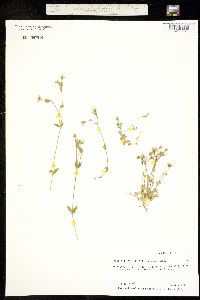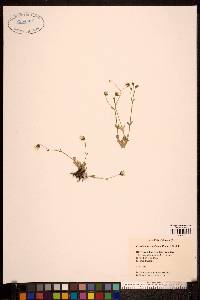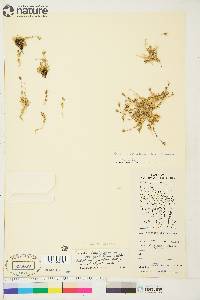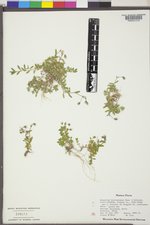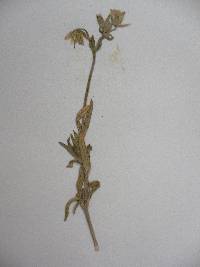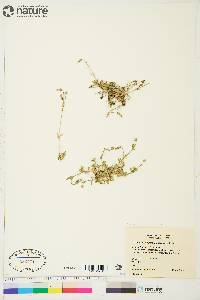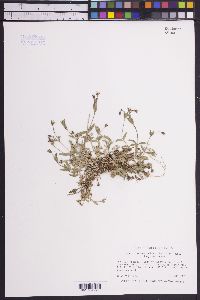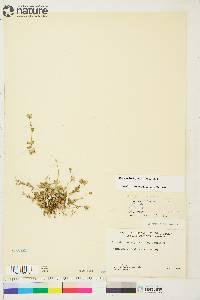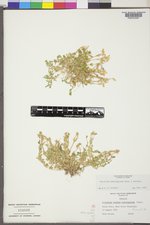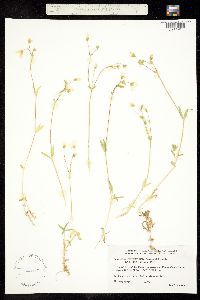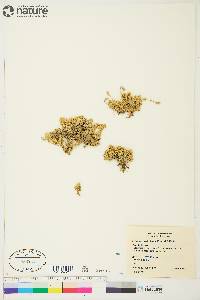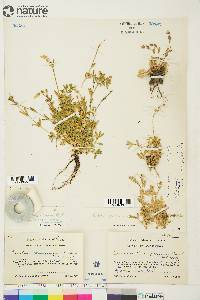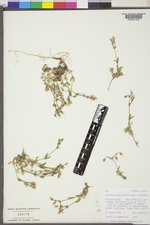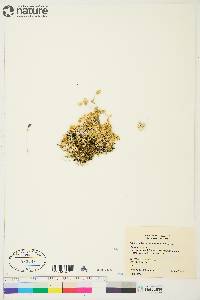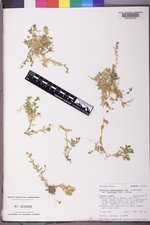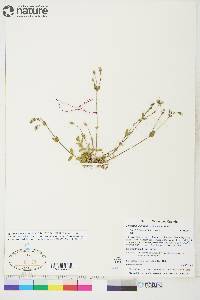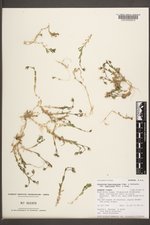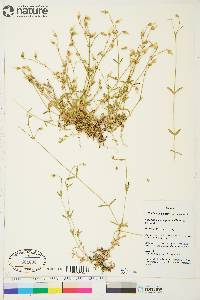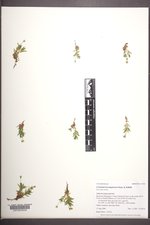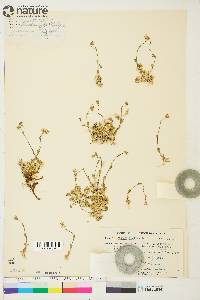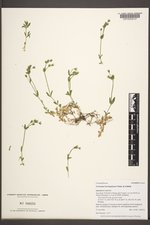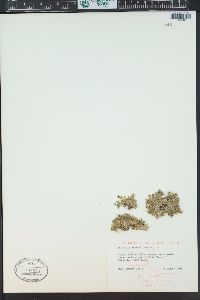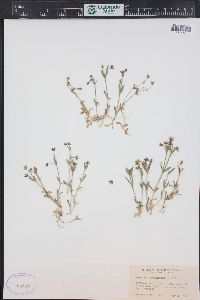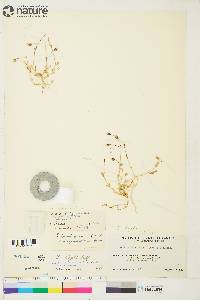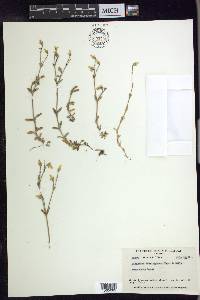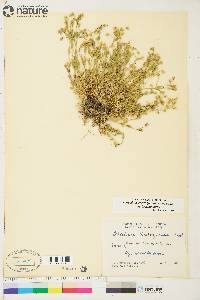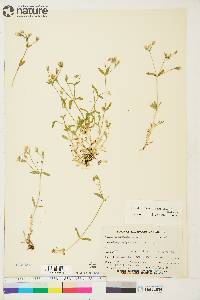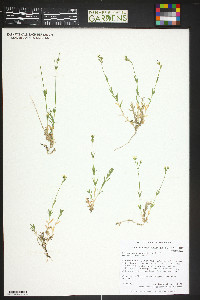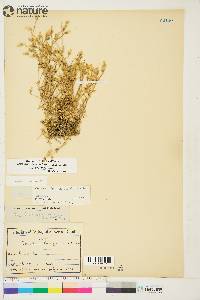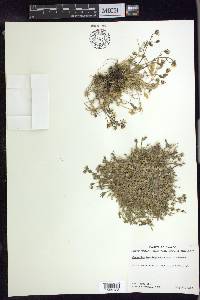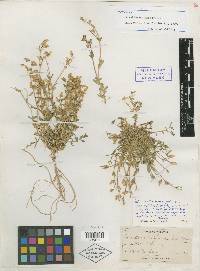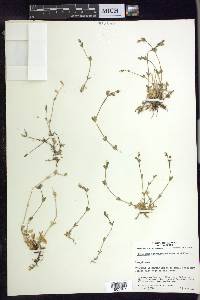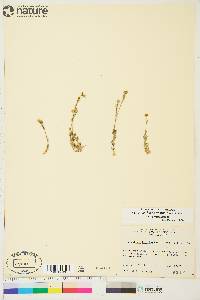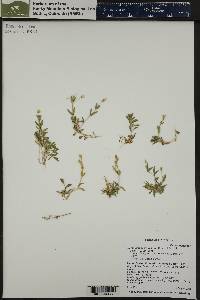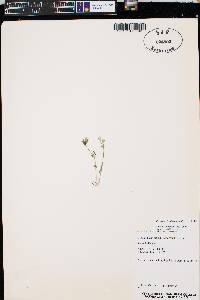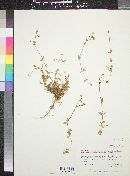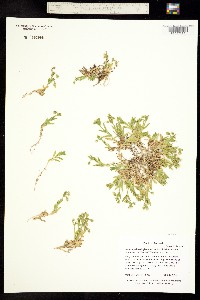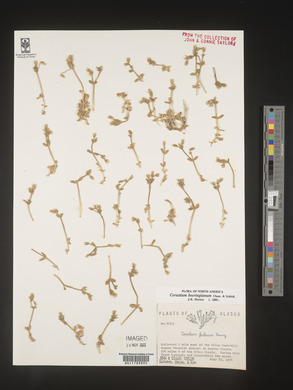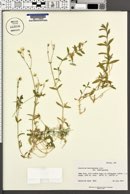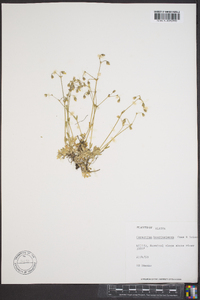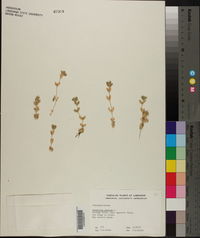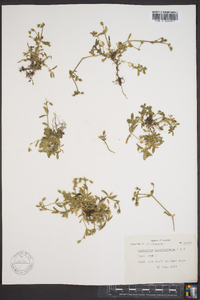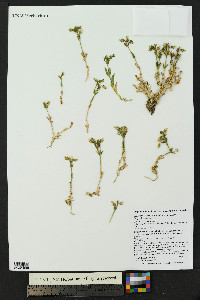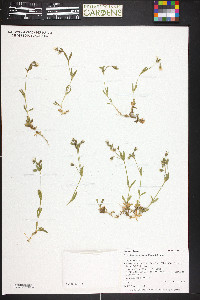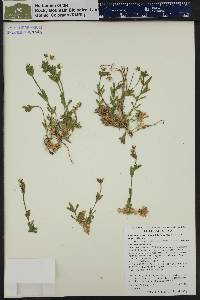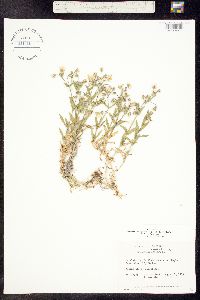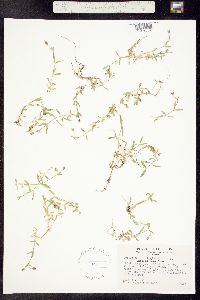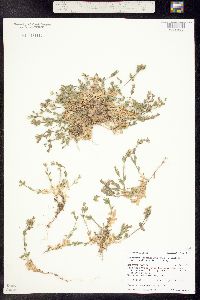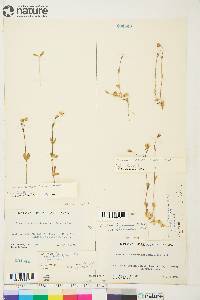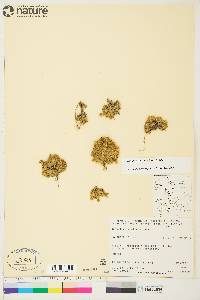
|
|
|
|
Family: Caryophyllaceae
Bering chickweed, more...Bering Sea Mouse-Ear Chickweed, chickweed
[Cerastium beeringianum var. glabratum Hultén, moreCerastium buffumiae , Cerastium variabile] |
Plants perennial, forming loose to dense mats or clumps, taprooted, with short, prostrate sterile shoots, rarely rhizomatous. Stems: flowering stems usually erect, 10-25 cm, glabrous to sparsely pubescent proximally, more densely so in mid and distal stem, hairs patent to slightly deflexed, multicellular, glandular and eglandular; internodes usually equaling or exceeding leaves; nonflowering shoots present; small axillary tufts of leaves absent. Leaves: sessile (flowering shoots) or petiolate (proximal stems and nonflowering shoots); flowering shoots with blade lanceolate, 5-20 × 2-5 mm, not succulent, apex ± acute, pubescent; proximal stem and nonflowering shoots with blade oblanceolate often spatulate, not succulent, apex obtuse, ± pubescent on both surfaces (rarely subglabrous), with straight, strigose hairs or cilia, hairs pale, fuscous, mostly eglandular. Inflorescences open, dichotomous, (1-)3-10-flowered cymes; bracts lanceolate, distal with scarious margins, proximal herbaceous and foliaceous, pubescence glandular and eglandular. Pedicels erect, angled at base of calyx in fruit, 8-55 mm, 1-5 times as long as capsule, densely pubescent with patent glandular and eglandular hairs. Flowers: sepals lanceolate to lance-elliptic, 3-7 mm, margins broad, apex ± acute, densely glandular-pubescent; petals broadly oblanceolate, 6-12 mm, ± equaling (rarely to 2 times as long as) sepals, apex deeply 2-fid; stamens 10; styles 5. Capsules cylindric, curved, 8-12 mm, ca. 2 times sepals, rarely shorter; teeth 10, erect, margins convolute. Seeds pale to dark brown, 0.7-1.1 mm, tuberculate; testa not inflated, tightly enclosing seed. 2n = 72. Flowering spring and early summer. Arctic and alpine tundra, meadows, open woodlands, rocky slopes, talus, cliff ledges, river and roadside gravel; 0-4000 m; Alta., B.C., Man., Nfld. and Labr., N.W.T., Nunavut, Ont., Que., Sask., Yukon; Alaska, Ariz., Calif., Colo., Idaho, Mont., Nev., N.Mex., Oreg., Utah, Wyo. Cerastium beeringianum is distinguished from C. alpinum by the absence of the long, silvery, flexuous, translucent, glistening hairs of that species. Cerastium beeringianum's pubescence consists of straight, strigose, multicellular, somewhat fuscous hairs of several lengths, many of those in the mid and distal stem and inflorescence being glandular and viscid. The nodes and the leaves, at least in the mid and distal stem, typically have long, strigose, eglandular, fuscous hairs; those on the adaxial surface of the leaf being appressed, and those on the nodes retrorse. However, plants from the many small, isolated populations on the mountains of western North America show a great deal of variation. Some of these populations tend to be subglabrous, lacking most of the long hairs normally found on this species. Others are small, delicate plants with slender divaricate pedicels and smaller capsules and seeds. Though names have been given to several of these variants, they frequently intergrade, and much of the variation is greatly influenced by the environment. Cerastium beeringianum is self-compatible and often self-pollinates, but the flowers are also freely visited by insects, particularly Diptera and smaller Hymenoptera, resulting in varying degrees of outbreeding. Cerastium beeringianum intergrades with C. fischerianum, and it may be appropriate to treat them as subspecies of a single species. Unfortunately, the name C. fischerianum has priority.
General: Alpine perennial, 4-25 cm tall, forming loose to dense clumps or mats; stems spreading to ascending, the flowering ones usually erect, glabrous to sparsely pubescent at the base, often densely pubescent along the mid to upper stem, glandular or not. Leaves: Basal and cauline, opposite, simple, lanceolate, oblanceolate, or oblong, 0.5-2 cm long, 2-5 mm wide, pubescent, margins entire, apex acute to obtuse; basal and lower cauline blades and also of the non-flowering shoots petiolate, blades of the flowering shoots sessile. Flowers: Inflorescence a loose cyme, 1-20 flowered, glandular and short pubescent; bracts lanceolate, the margins membranous; pedicels erect to nodding, 5-30 mm long, glandular-pubescent; sepals narrowly lanceolate to lance- elliptic, mostly 3.5-6 mm long, usually pubescent and glandular, the margins membranous; petals obovate, 7.5-9 mm long, white, the apex 2-lobed; flowers June-July. Fruits: Capsule, cylindric, curved, 8-12 mm long, approximately twice the length of the calyx, teeth erect, margins convolute; seeds numerous, pale to dark brown. Ecology: Meadows, woodlands, rocky slopes, alpine tundra; 3400- 3700 m (11000-12000 ft); Coconino County (San Francisco Peaks); Canada, western U.S. Notes: na Editor: Springer et al. 2008 |
This project was made possible in part by the Institute of Museum and Library Services [MG-70-19-0057-19].
Powered by Symbiota

